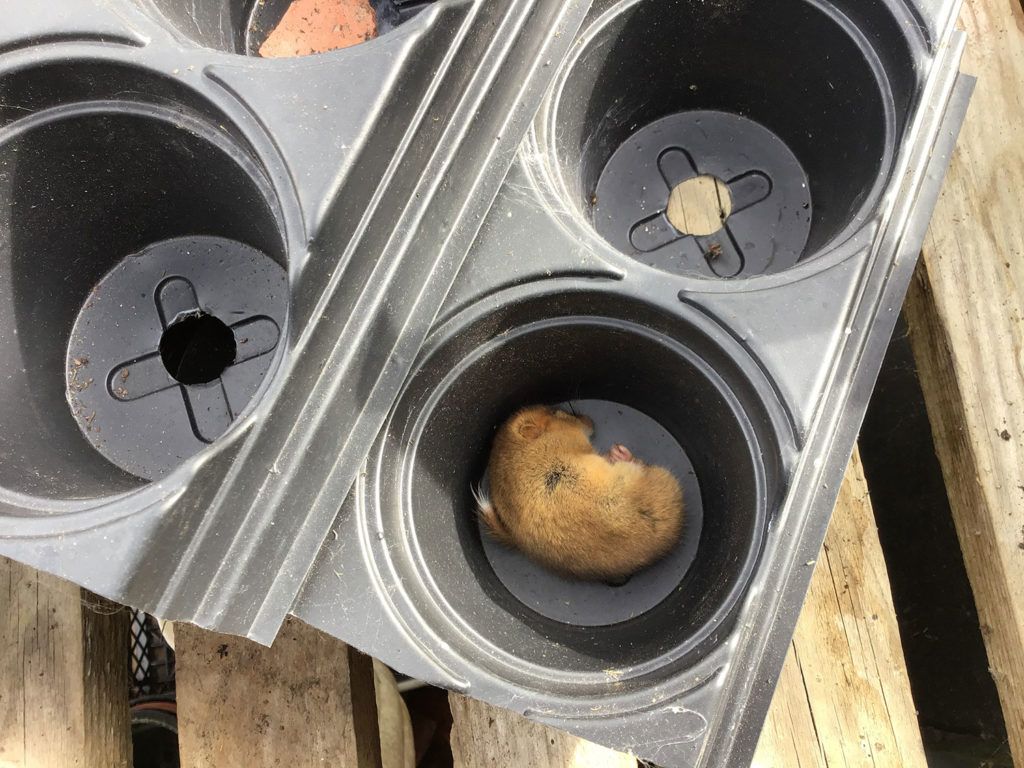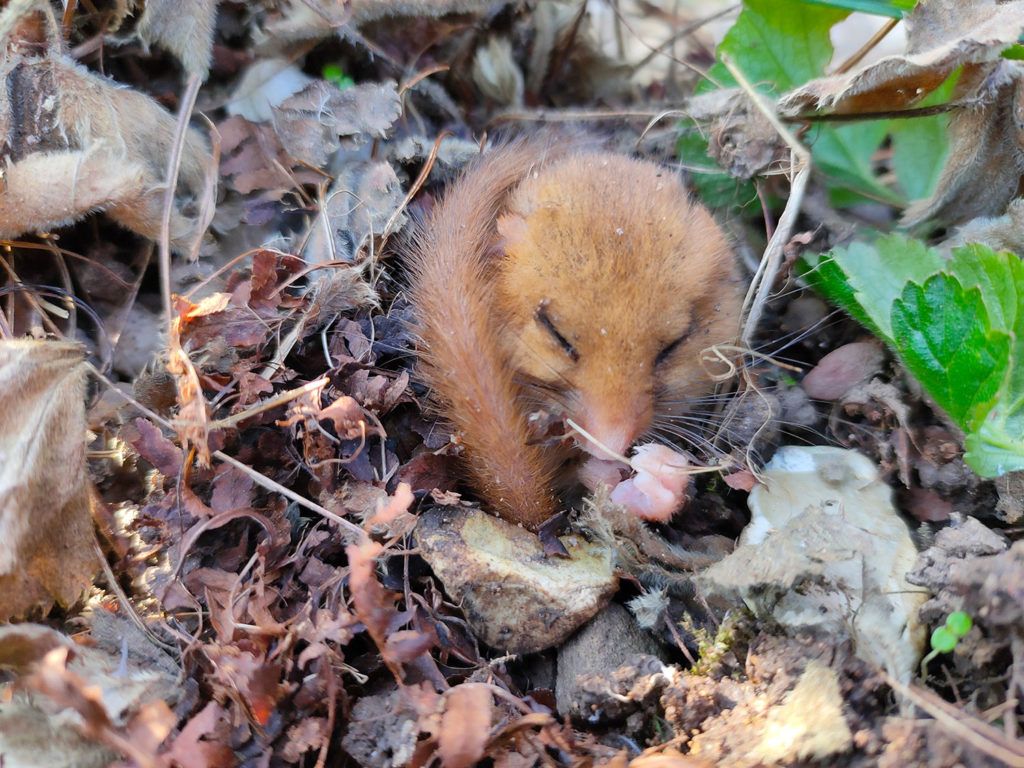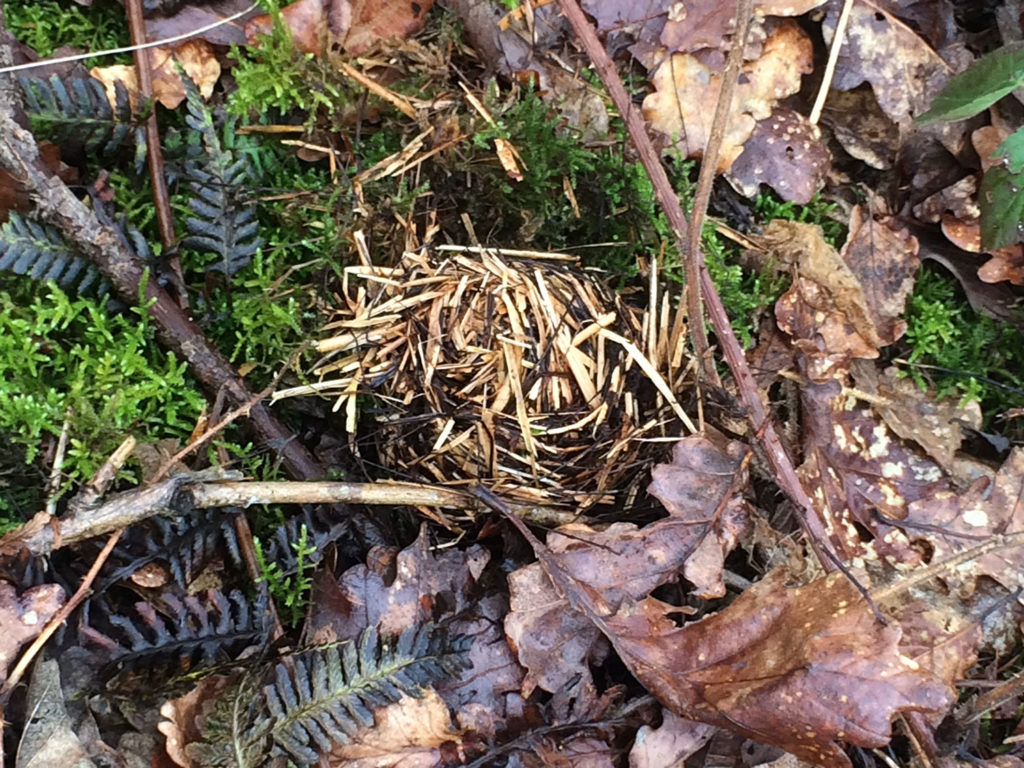Hibernation strategy
There are three main strategies that animals use to help them get through the winter months. They migrate and move away from harsh weather; they adapt by growing thicker fur and storing food, or they hibernate. Hibernation is often referred to as a ‘sleep’ but it’s a very special type of sleep. The animal’s body temperature drops, its heart rate and breathing slow right down, and they use it to save energy, rather than to have a rest. Hazel dormice hibernate. In autumn, mature dormice feed up on hazelnuts, and other available nuts and berries, and start to put on weight. It’s not known what the trigger is for dormice to go into hibernation but it’s likely to be a combination of factors including temperature, longer nights and body condition. Usually dormice weigh about 20g but the heaviest recorded was a whopping 44g found in Devon.
When they’re ready, dormice come down from the shrub layer, where they’ll have spent their active summer months and build a small round nest on the ground, seal themselves in, and go into hibernation. During winter they will likely repeat the process a few times, perhaps to relieve themselves.

Dormouse hibernating in plant tray. Image credit Cilla King
There’s little evidence to suggest that dormice do any sort of hibernation preparation other than they seem to hibernate within their active range. It’s often said that they hibernate under log piles or in coppice stools. While this is true, they also hibernate under leaf litter, on slopes, even by pilings on motorway embankments. This year we had an unusual record of a dormouse hibernating between two plastic plant trays in a greenhouse in Devon.
Nesting dormice
Dormice hibernate on the ground. This is because the temperature is likely to be more stable and they need to stay cold to keep them in hibernation. Hibernating on the ground also means they can stay damp. People very often find hibernation nests in quite exposed locations. In captive breeders cages dormice always hibernate in soil that has no cover as opposed to soil that’s covered by a roof.

Image credit Stephen Bardwell
You would think that hibernating on the ground would make them more vulnerable to predators, but evidence suggests they’re very hard to find. Even dogs, with their excellent sense of smell are unable to detect a hibernating dormouse.
In spring, dormice start to wake up more frequently. They’ll also be awake for longer periods so that by April, about half the population is awake. They’ll all typically be awake and active by May.

A dormouse nest. Image credit Rachel Findlay Robinson
Although we know quite a lot about dormice, hibernation is still something of a mystery. But it’s an important period of their life, as more dormice die in hibernation than at any other time. This is probably due to the variable winter temperatures in Britain that wakes them up more often and causes them to simply run out of energy.
There’s still so much more to discover about dormice and their hibernation. If we knew about where they hibernate and the factors that affect their over winter survival, it may significantly help the conservation of this species in the UK.
Written by Ian White, Dormouse and Training Officer
